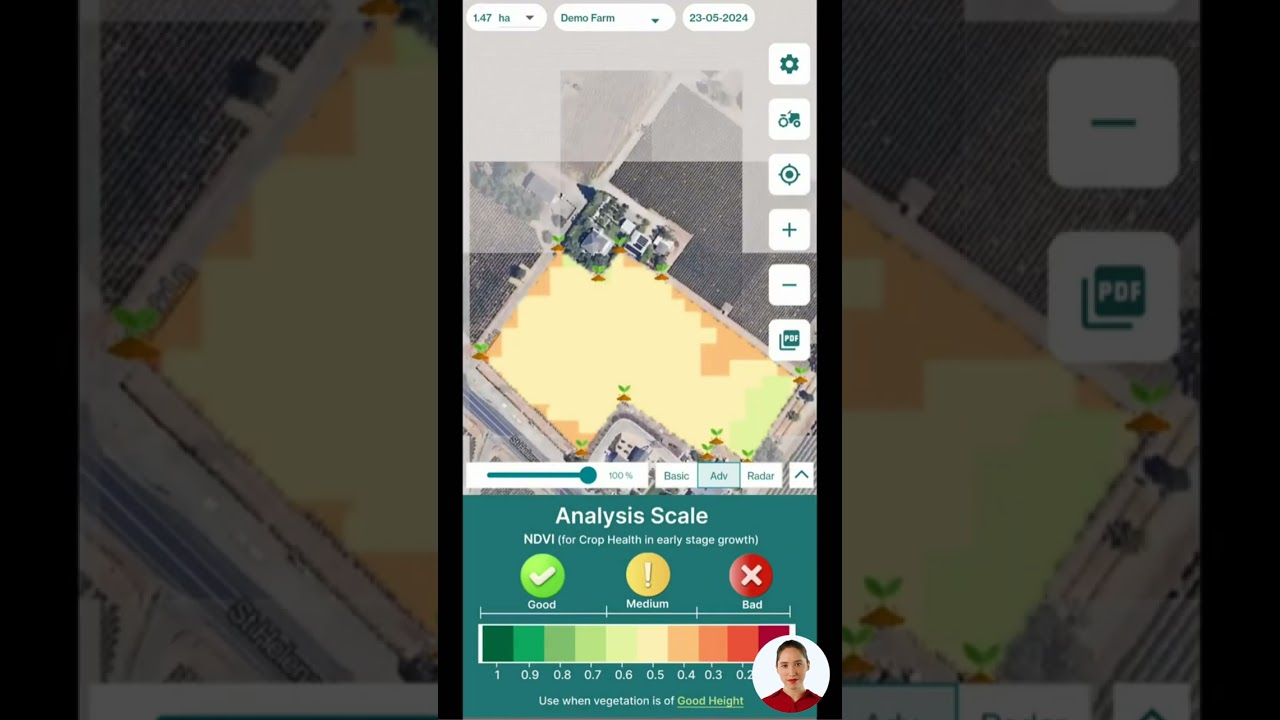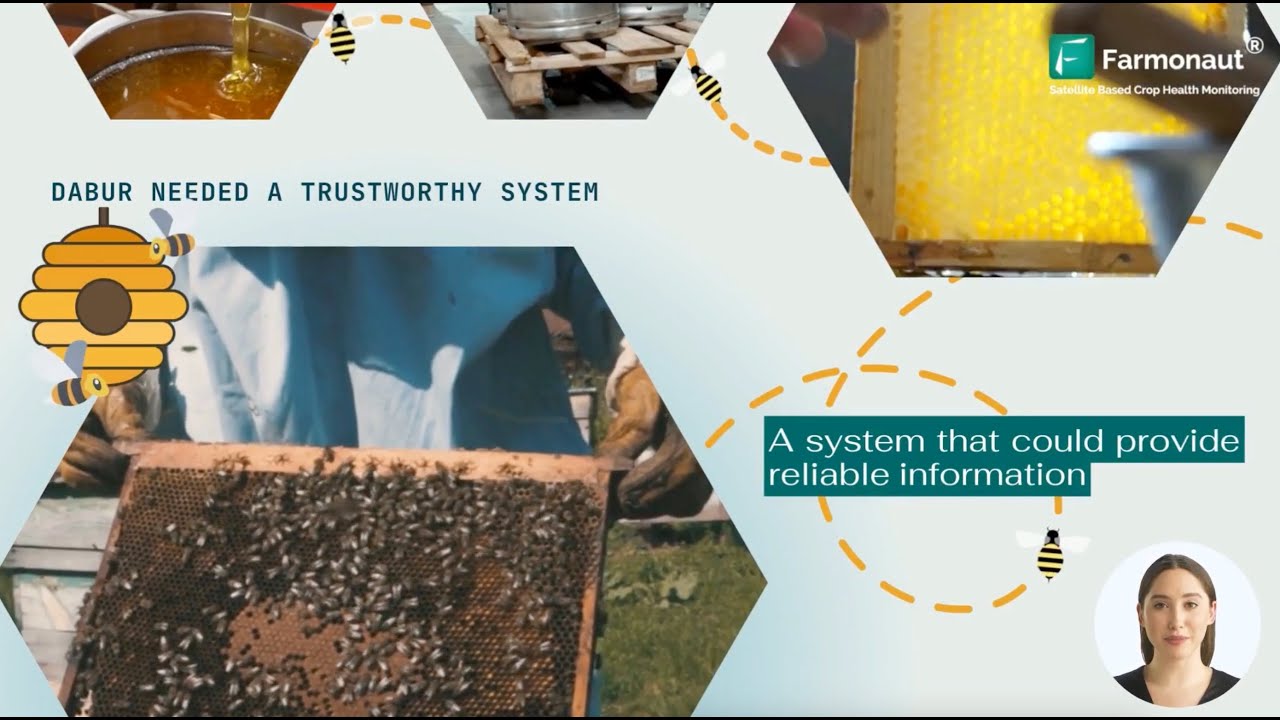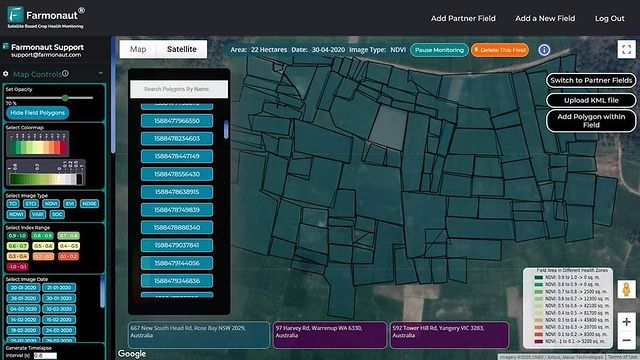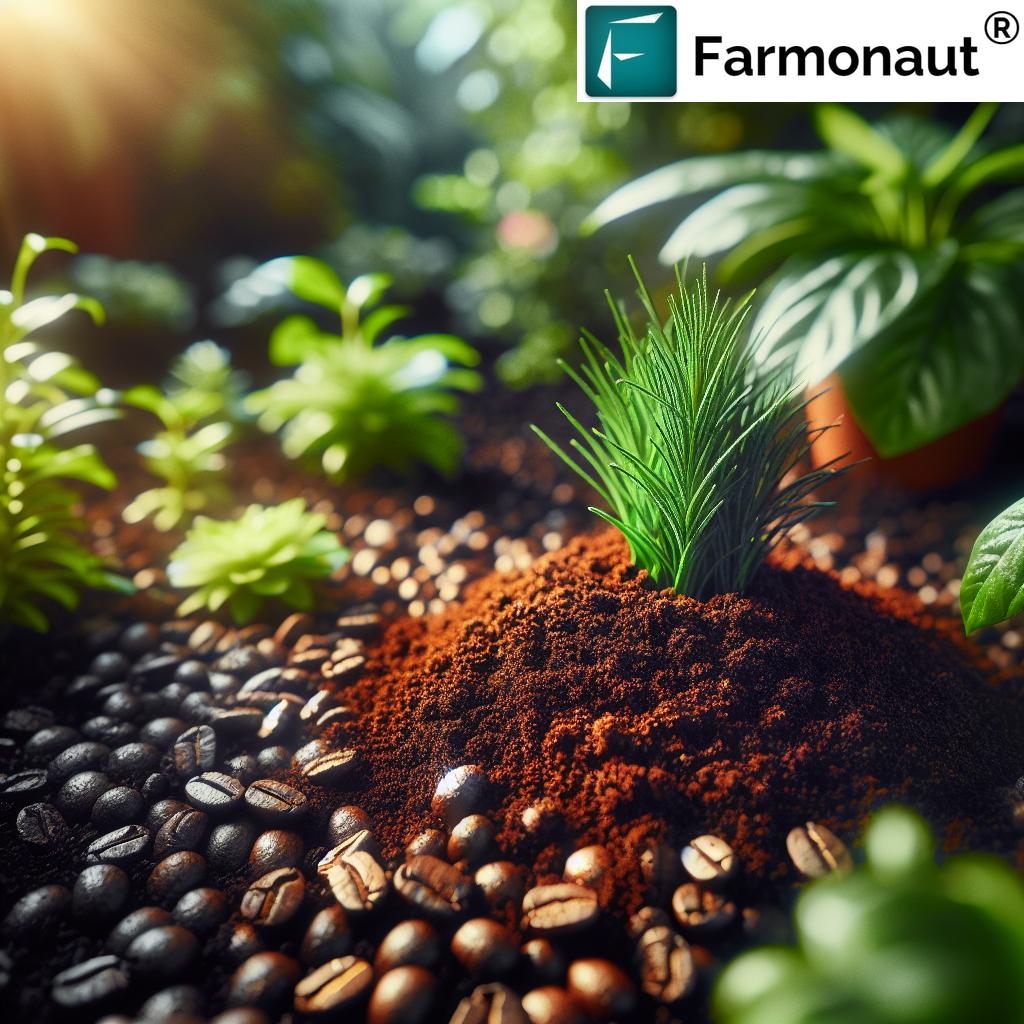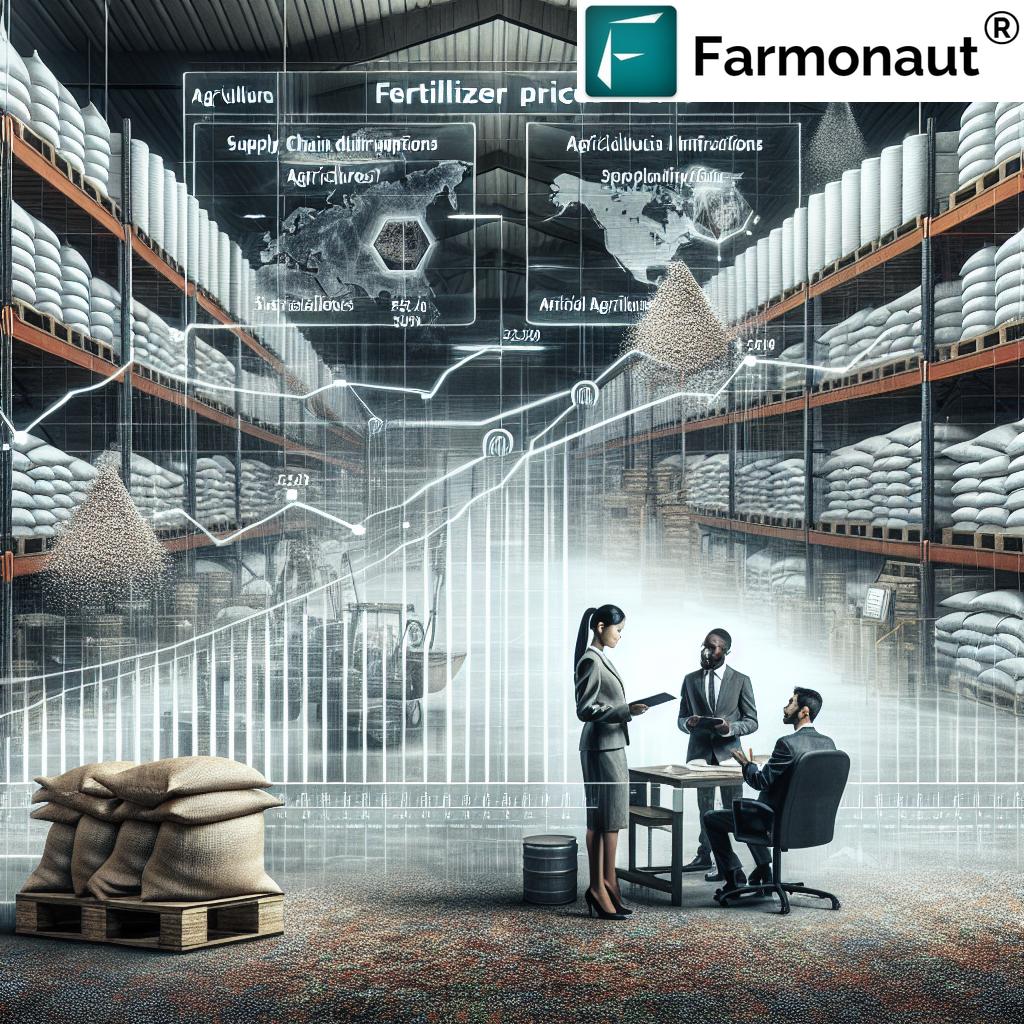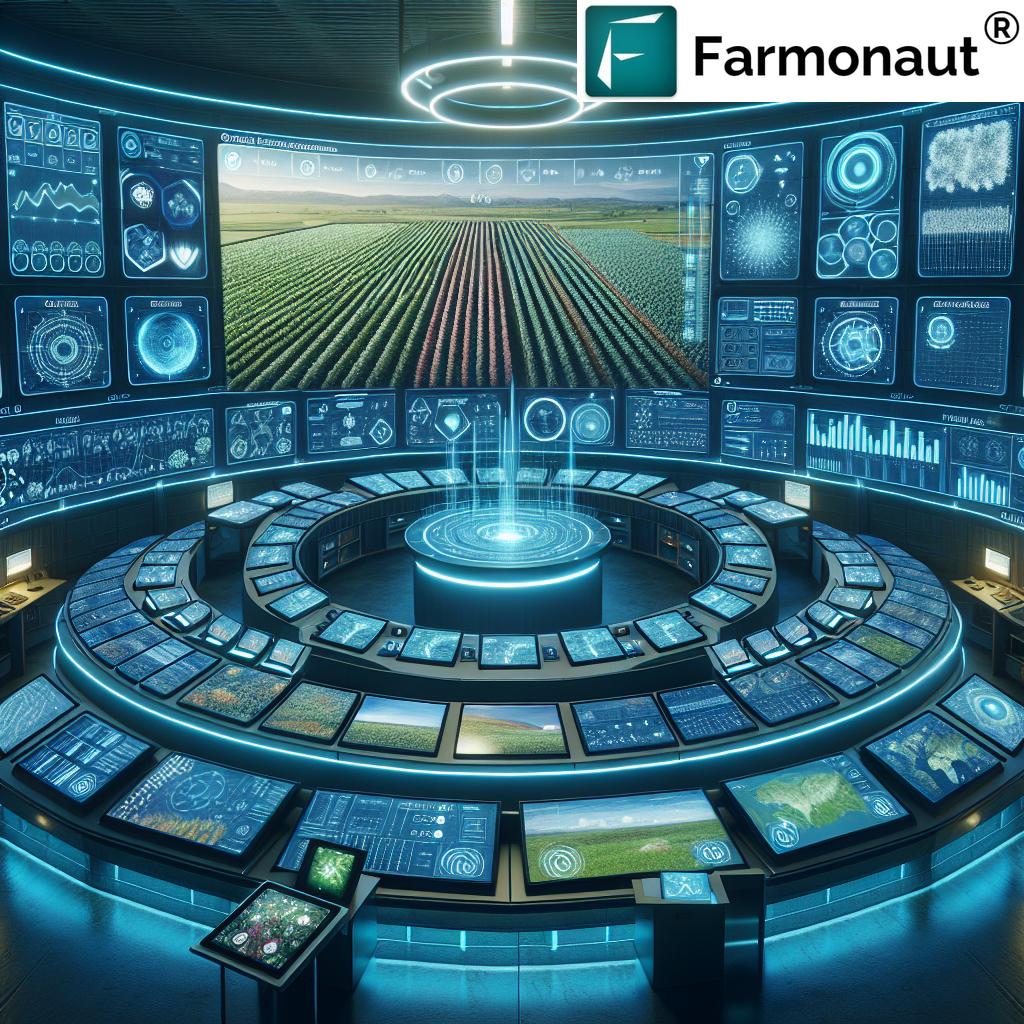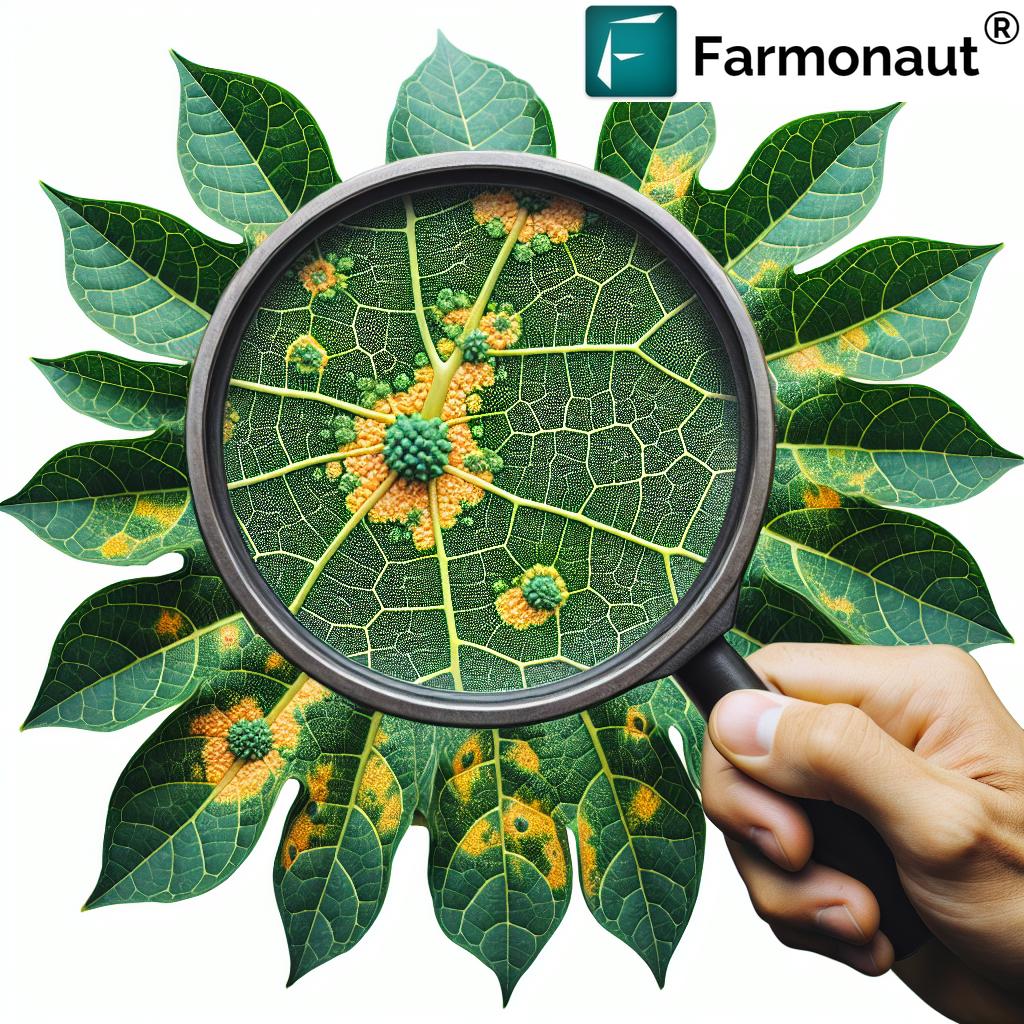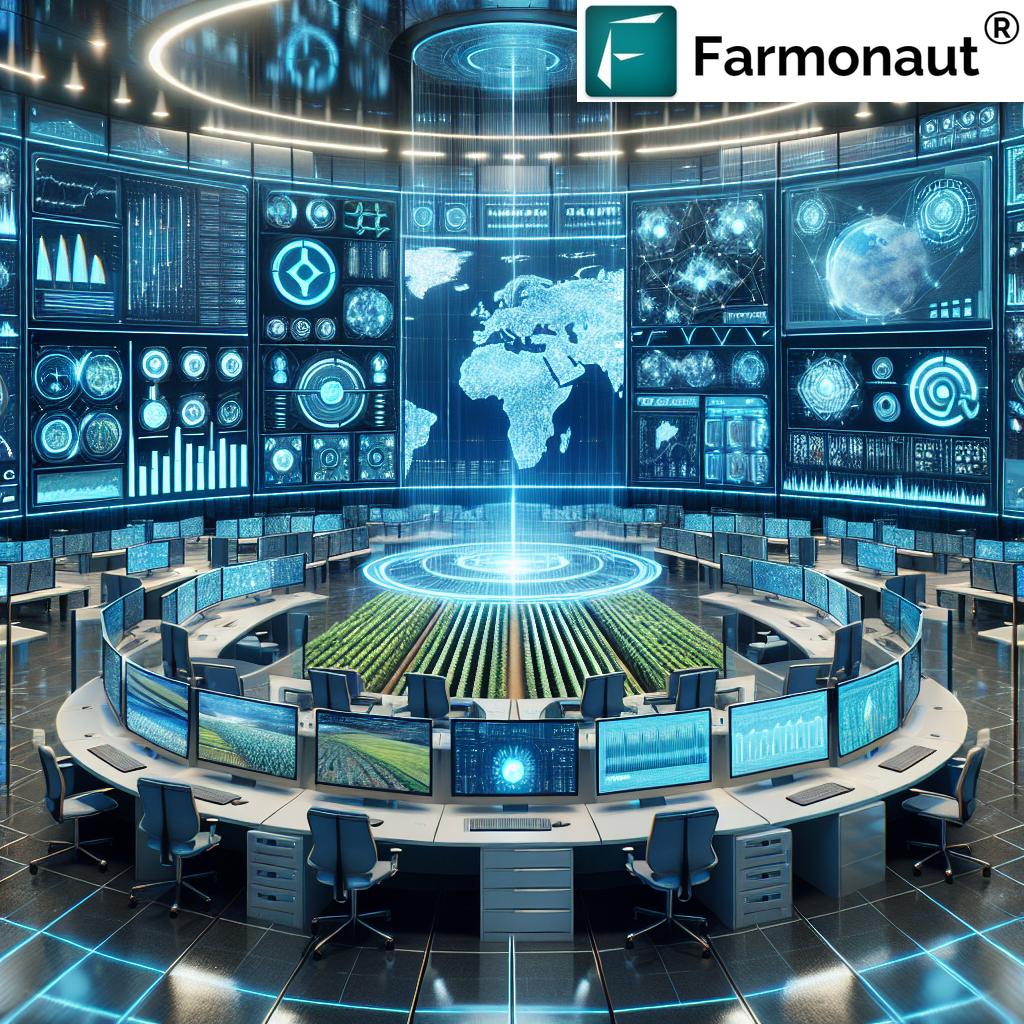Produce Traceability: 7 Tech Secrets You Must Know!
“Over 60% of global food companies now use blockchain for produce traceability, ensuring transparent supply chains.”
Table of Contents
- Introduction to Produce Traceability
- Why Produce Traceability Matters in Agriculture & Forestry
- 7 Tech Secrets Enhancing Produce Traceability
- Technology Impact Comparison Table
- Image Gallery & Embedded Videos
- Steps to Implement Food Traceability Systems
- Key Challenges in Produce Traceability
- Farmonaut’s Role in Agricultural Traceability Technology
- Farmonaut Products: Use Cases & Links
- Farmonaut App & API Access Buttons
- Farmonaut Subscription Plans
- FAQ
- Conclusion & The Road Ahead
Understanding Produce Traceability in Agriculture and Forestry
In our rapidly evolving agriculture and forestry industries, produce traceability stands out as a core pillar for building consumer confidence, ensuring food safety, and empowering stakeholders with unprecedented transparency. With the ability to track and document every step of a product’s journey—from cultivation and processing to distribution—we now have the systems and technologies to answer vital questions: Where did this food come from? How was it produced? Who handled it, and were all regulations followed?
Today’s produce traceability landscape is undergoing a remarkable transformation powered by technological advances like blockchain, RFID, IoT devices, and AI. As we unravel these 7 Tech Secrets, you’ll discover how these innovations are setting new standards of quality, trust, and efficiency across the entire food supply chain.
Why Produce Traceability Matters in Agriculture & Forestry
Let’s dive into the principal reasons produce traceability has become non-negotiable for food suppliers, growers, and regulators alike:
1. Food Safety and Public Health
When an outbreak of foodborne illness occurs, rapid and reliable traceability systems enable us to identify and remove contaminated products from the supply chain fast, minimizing harm to the public. This critical process supports global health and regulatory compliance, as evidenced in numerous studies and by tracking emerging best practices worldwide.
2. Consumer Confidence and Transparency
Modern consumers expect open access to detailed information about where their food comes from, the methods used to produce and process it, and who handled it at every stage. With produce traceability systems, transparency becomes possible, driving trust and loyalty.
3. Regulatory Compliance
Governments and food safety bodies are tightening traceability requirements to protect populations and trade. Meeting evolving food regulations demands robust, digital traceability systems capable of providing granular records across every channel.
4. Operational Efficiency & Cost Savings
Advanced traceability in agriculture reduces waste, improves inventory management, and improves resource allocation. In combination with technologies like AI and blockchain, we can identify patterns and optimize our processes for maximum efficiency.
“RFID technology can track produce through 100+ supply chain points, boosting traceability accuracy and speed.”
7 Tech Secrets Enhancing Produce Traceability & Supply Chain Transparency
We’re witnessing a revolution in produce traceability—let’s explore the 7 leading technology solutions enhancing food safety, authenticity, and trust throughout the supply chain:
1. Blockchain Technology: Secure, Transparent, and Immutable Record-Keeping
Focus Keyword Example: blockchain in agriculture
The adoption of blockchain in agriculture has sparked a paradigm shift in traceability. Blockchain, a secure and immutable ledger, records every stage of a product’s journey—from cultivation to distribution. Each action (recorded as a digital “block”) is validated by the network, cementing a transparent and tamper-proof record.
- Eliminates data tampering: Once data is recorded, it cannot be altered or deleted.
- Strengthens trust: All stakeholders—from farmers to consumers—can access and verify product history for greater transparency.
- Accelerates regulatory compliance: Governments can verify adherence to food safety and traceability standards with ease.
For information on Farmonaut’s blockchain-powered traceability solutions making supply chain transparency accessible and affordable, visit our blockchain-based product traceability page.
2. RFID Traceability in Farming: Smart Tags for Real-Time Tracking
Focus Keyword Example: rfid traceability in farming
RFID (Radio-Frequency Identification) enables produce traceability at scale. By attaching RFID tags to produce batches, crates, or pallets, we achieve:
- Automated, high-speed identification: RFID readers capture multiple tags instantly—much faster than barcodes.
- Real-time monitoring: Every time produce passes a checkpoint (packing, shipping, arrival), the system automatically updates records, enabling granular tracking.
- Scalable data collection: RFID supports mass inventory management and even fine-grained tracing across dozens—or hundreds—of supply chain steps.
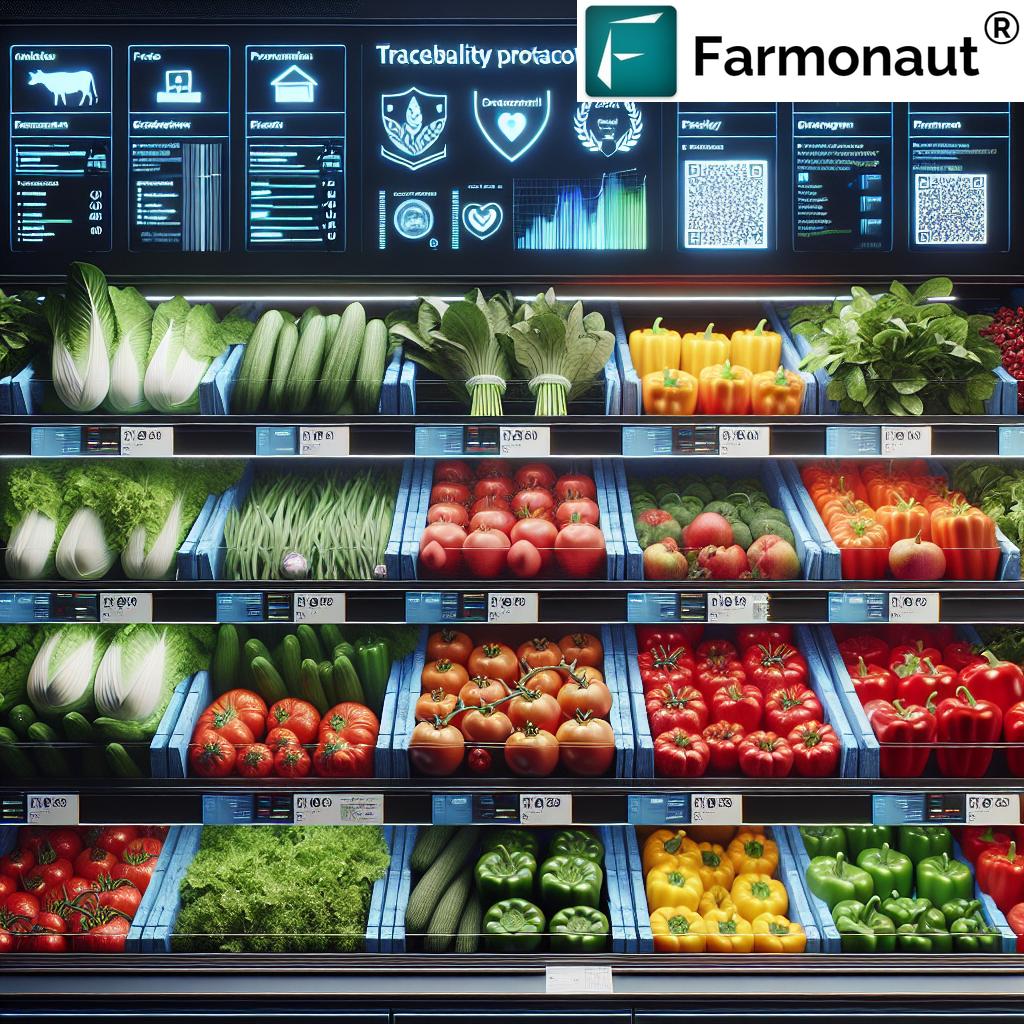
3. IoT in Food Supply Chain: Smart, Connected Sensors
Focus Keyword Example: iot in food supply chain
The Internet of Things (IoT) leverages interconnected devices and sensors—integrated across farms, warehouses, and trucks—to monitor:
- Real-time temperature, humidity & storage conditions
- GPS and route tracking for transportation
- Produce status and handling quality at every point
When coupled with RFID traceability in farming, IoT multiplies the power of food traceability systems by collecting and transmitting rich, instant data to a centralized dashboard, boosting efficiency and accuracy.
To explore more about satellite-based and real-time crop monitoring tools, see Farmonaut Crop Plantation, Forestry & Farm Advisory Solutions.
4. Smart Labels for Produce and QR Codes: Consumer-Facing Transparency
Focus Keyword Example: smart labels for produce; qr codes
Smart labels and QR codes bridge the gap between supply chain transparency and end-user experience:
- QR codes provide instant access: Anyone can scan a product’s code to view the complete history—cultivation, processing, and transport details—right from their smartphone.
- Smart labels enable deeper data-sharing: By embedding RFID or QR, the system shares batch data, storage temperature logs, processing methods, and compliance checkpoints.
- Boosts marketing and trust: These codes are often used in promotional campaigns, leveraging transparency for both safety and consumer confidence.
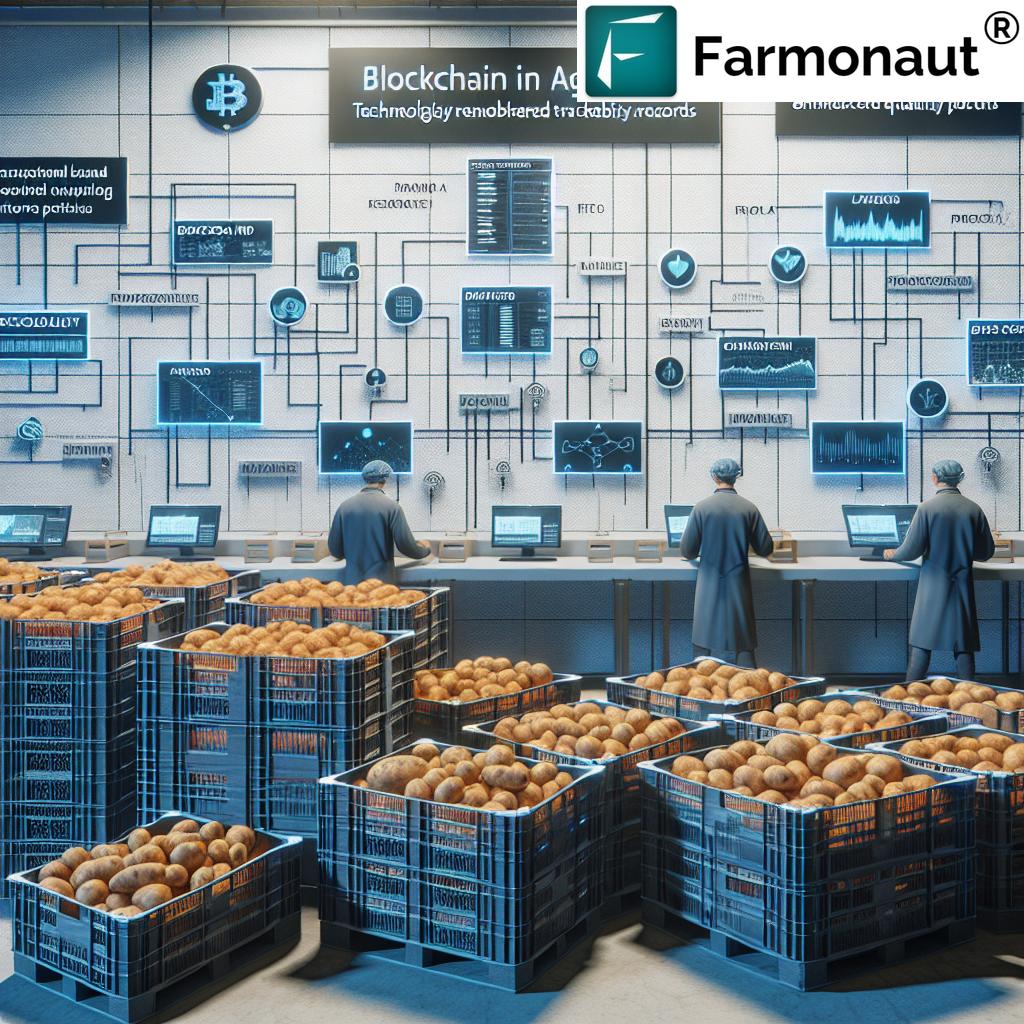
5. Artificial Intelligence (AI) & Machine Learning: From Data to Smart Decisions
Focus Keyword Example: food safety and traceability; ai in agricultural traceability technology
AI and machine learning algorithms analyze massive volumes of traceability data to:
- Spot emerging patterns: Quickly identify quality risks, potential fraud, or supply chain slowdowns.
- Predict spoilage and optimize logistics: By tracking crops, environmental data, and shipment conditions, AI helps us reduce loss, optimize storage and pinpoint intervention times.
- Facilitate regulatory compliance: Automated systems report and flag compliance gaps for rapid action.
6. Satellite Imaging & Remote Sensing: Full-Spectrum Crop & Land Visibility
Focus Keyword Example: satellite imaging for farm traceability; produce traceability data
Satellite-based systems empower us with precise, real-time field data—often without the need for on-ground sensors at every location:
- Monitor crop health & environmental impacts: Identify vegetation health, soil moisture, and potential threats using high-frequency remote sensing.
- Forecast harvest & track field history: Satellites archive complete product origin and cultivation records, crucial for traceability in forestry and large-scale agriculture.
- Optimize resource management: Leverage objective data to fine-tune irrigation, pesticide use, and fertilizer scheduling for both maximum yield and sustainability.
Learn how Farmonaut combines multispectral satellite imagery with AI for next-generation farm management and traceability at Farmonaut Large-Scale Farm Management.
7. Standardization & Integration Tools: The Backbone for Interoperable Systems
Focus Keyword Example: standardized traceability protocols; protocols for data sharing
None of these innovations work in isolation. Only through standardization and integration can we ensure seamless information flow across stakeholders, different platforms, and borders:
- Globally recognized protocols: Enable international trade by setting standard data formats (GS1, ISO, etc.).
- Interoperable APIs: Allow different traceability systems to communicate, aggregate, and verify data.
- Unified dashboards: Bring together blockchain, IoT, RFID, and satellite data for central monitoring and reporting.
Access Farmonaut’s API to seamlessly integrate satellite and weather data with your supply chain systems:
Farmonaut API |
API Developer Docs
Technology Impact Comparison Table: Produce Traceability Systems at a Glance
| Technology | Functionality | Estimated Adoption Rate | Implementation Cost | Advantages | Challenges |
|---|---|---|---|---|---|
| Blockchain | Immutable ledger for recording, sharing, and verifying produce traceability data across supply chain actors. | 60% (global food sector, growing) | Medium-High (system, integration, training) |
Secure, transparent, tamper-resistant, trusted by consumers and regulators, easy auditing. | Requires tech expertise, initial system setup cost, network standardization. |
| RFID | Automatic tag reading for real-time produce identification and movement tracking. | 45% (large-scale adopters) | Medium (tags, readers, integration) |
Non-line-of-sight reading, bulk scanning, detailed supply chain monitoring, inventory accuracy. | Hardware investment, data standardization, privacy concerns. |
| QR Codes & Smart Labels | Unique, scannable identifiers on labels for consumer access to product information and supply chain history. | 70% (commodity to premium produce) | Low (printing, app integration) |
Cost-effective, consumer engagement, branding, easy scanning via smartphones. | Limited to label durability, relies on system accuracy for source data. |
| IoT | Network of connected sensors for real-time data on crop/storage/transportation conditions. | 35% (increasing in modern supply chains) | Medium (devices, connectivity, software) |
Automated data, predictive analytics, compliance, quality assurance. | Connectivity issues, device cost, cybersecurity needs. |
Gallery & Educational Videos: See Produce Traceability in Action


How to Implement Food Traceability Systems in Agriculture & Forestry
Ready to bring robust traceability to your operations? Here are the essential steps all stakeholders must follow for effective deployment:
- Comprehensive Data Collection: Meticulously document every stage, including cultivation practices, harvest, processing, transport, and distribution.
- Technology Integration: Select and implement a blend of rfid, barcodes, blockchain, iot devices or satellite-based tools to automate and unify data gathering.
- Adopt Standardized Protocols: Rely on approved international standards (e.g., GS1, ISO) for data recording and sharing for seamless communication and regulatory compliance.
- Training & Education for Stakeholders: Provide hands-on training so everyone from field workers to IT managers understands both the why and how of your traceability system.
- Consumer Engagement: Use smart labels, branded QR codes, or mobile apps to empower consumers to verify product authenticity and quality.
Explore satellite-powered crop insurance and loan verification by Farmonaut to enable data-backed authentication for lenders, buyers, and insurers globally.
Key Challenges in Produce Traceability & How We Overcome Them
While the benefits are compelling, effective produce traceability faces distinct challenges:
- Cost of Implementation: Upfront investments in hardware, software, and training can be significant—especially for smaller or resource-constrained operations.
- Lack of Standardization: Divergent data formats or protocols can create challenges for cross-border trade and integrated traceability systems; global initiatives are closing this gap.
- Data Security & Privacy: With digital traceability comes the need for robust cybersecurity protocols—protecting sensitive stakeholder information from unauthorized access and ensuring regulatory compliance.
Farmonaut’s secure architecture ensures data is encrypted and accessible only to authorized users, helping address data security risks at every level.
Farmonaut’s Role: Precision, Transparency & Affordability for All in Agricultural Traceability Technology
Farmonaut is transforming how produce traceability and food traceability systems are adopted, focusing exclusively on precision agriculture and supply chain transparency—not as a regulator, input provider, or marketplace, but as a pure technology innovator.
- Satellite-Based Crop Health Monitoring:
- Delivers high-frequency, actionable insights on crop conditions, soil moisture, and field history for better traceability.
- AI-Driven Farm Advisory (Jeevn AI):
- Transforms satellite data into real-time, tailored recommendations for farmers—optimizing yield and resource use.
- Blockchain-Powered Traceability:
- Establishes trust and supply chain transparency by making audit trails accessible and tamper-proof.
- Fleet & Resource Management:
- Enables tracking and efficient management of vehicles and workflows, ensuring safe and timely produce deliveries.
- Carbon Footprinting:
- Tracks emissions and supports adherence to stringent sustainability and environmental compliance mandates.
Our mission is simple: deliver advanced, data-driven traceability systems that are scalable, affordable, and user-friendly for farmers, agribusinesses, and governments worldwide.
Farmonaut Products: Empowering Traceability & Smart Farm Management
-
Product Traceability:
Gain complete supply chain transparency using blockchain-powered traceability, with secure recording, rapid authentication, and regulatory compliance for agriculture and related sectors. -
Carbon Footprinting:
Automate data collection on carbon emissions across your farm or agribusiness, monitor environmental impact, and comply with sustainability protocols using real-time analytics. -
Crop Loan & Insurance Verification:
Authenticate farm location, crop health, and acreage using satellite data for risk-free credit, insurance, and subsidy disbursal. -
Fleet Management:
Track and manage all your agricultural vehicles, field staff, and deliveries in one dashboard to enhance workflow and safety. -
Large Scale Farm Management:
Centralized, scalable crop and field oversight powered by AI, satellite tracking, and mobile tools—for plantations, governments, and agribusinesses.
Farmonaut at Your Fingertips: Access Our Web, Mobile App & API
For developers and tech integrators: Access Farmonaut API | Read the API Developer Docs
Farmonaut Subscription Plans: Affordable, Scalable, and Accessible
Choose from flexible subscription options tailored for individual farmers, agribusinesses, cooperatives, or government programs. Monitor fields, manage resources, and empower your food traceability system at any scale:
Frequently Asked Questions (FAQ) on Produce Traceability
What is produce traceability and why is it important?
Produce traceability is the ability to systematically track and document agricultural and forestry products from farm origin through every step—processing, packaging, distribution, and system channels—to the end consumer. It ensures food safety, regulatory compliance, transparent supply chains, and consumer trust.
How does blockchain enhance produce traceability?
Blockchain in agriculture provides an immutable, transparent record for every transaction or product movement, making data tamper-resistant and instantly verifiable by all stakeholders. This directly empowers food safety and traceability, reduces fraud, and supports compliance with food regulations.
What’s the difference between RFID and QR codes in tracking?
RFID uses electronic tags and radio waves for bulk, automated identification at high speed—ideal for large-scale supply chains and inventory. QR codes, on the other hand, are printed on labels and scanned individually—most useful for consumer-facing traceability information and authentication at the point of sale.
What role does IoT play in a food traceability system?
IoT in food supply chain uses smart sensors to continuously gather environmental, logistical, and quality data about agricultural products in real time—enabling granular tracking, predictive insights, and compliance with regulatory requirements.
Can Farmonaut’s platform help with regulatory compliance?
Absolutely! Farmonaut’s cloud-based platform supports data collection, traceability, and transparency aligned with international food safety and environmental regulations. Our blockchain solution, integrated with automated compliance protocols, is especially valuable for audits and certifications.
How can small farms afford these advanced produce traceability systems?
Farmonaut’s unique approach leverages satellite imagery, AI, and mobile accessibility—bypassing the need for expensive on-ground hardware. Our scalable, subscription-based model ensures affordable entry points for individual farmers and small cooperatives—democratizing data-driven traceability.
Conclusion: The Road Ahead for Produce Traceability, Technology & Trust
In today’s dynamic agricultural and forestry industries, produce traceability has transcended from a regulatory checkbox to an essential strategic asset. As we’ve seen, blockchain, RFID, IoT, AI, and satellite-enabled traceability systems are no longer “nice-to-have”—they are critical to ensuring food safety, supply chain transparency, and confidence for consumers, retailers, and governments worldwide.
Our collective future depends on adopting robust, interoperable, and secure agricultural traceability technology—not as a burden, but as the foundation for quality, trust, and sustainability in food production and forestry. By leveraging the latest technological advancements and standardized protocols, we empower every stakeholder, from farmer to buyer to policy maker, to build a safer, brighter tomorrow.
Ready to start your traceability journey? Download Farmonaut or access our advanced API now and join us at the forefront of the global produce traceability revolution.



